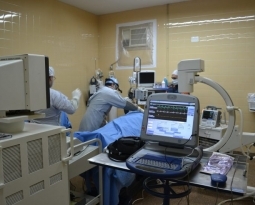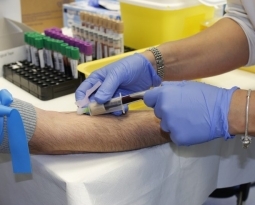Alabama Patent of the Month – April 2024
GeneCapture, Inc., a pioneer in point-of-care diagnostics, has been granted a patent for an invention set to revolutionize the way we approach sample preparation and nucleic acid detection. The integrated cartridge is a marvel of engineering that combines sample homogenization, nucleic acid fragmentation, and nucleic acid detection in one compact device.
At the heart of this innovation lies a main housing, equipped with a sample inlet, a sample well, and a detection chamber. But the real magic happens with the sonication feature—a specialized chamber designed to receive sample fluid and transmit ultrasonic energy for efficient homogenization and fragmentation. Suspended from the main housing, this feature boasts a unique coupling mechanism, ensuring seamless integration into the cartridge’s fluidic path.
Why is this invention so groundbreaking? Imagine being able to perform sample preparation and nucleic acid detection in a single cartridge, without the need for manual intervention or specialized laboratory equipment. With GeneCapture’s integrated cartridge, this vision becomes a reality.
Compact and portable, these cartridges hold the potential to transform point-of-care diagnostics, offering sample-in/answer-out capabilities in a variety of medical settings—from healthcare practitioner offices to disaster zones. And with fluid capacities ranging from 1 mL to 200 mL, they provide flexibility and scalability to meet diverse testing needs.
GeneCapture’s integrated cartridges are designed to be inserted into nucleic acid detection readers, streamlining the testing process even further. By limiting ultrasonic energy coupling to the main housing, the sonication feature ensures efficient sample processing without interference.
GeneCapture’s system includes temperature monitoring and control mechanisms, ensuring optimal conditions for sample processing. Whether cooling a coupling fluid or dissipating ultrasonic energy using inert beads, these features enhance the reliability and consistency of test results.
Are you developing new technology for an existing application? Did you know your development work could be eligible for the R&D Tax Credit and you can receive up to 14% back on your expenses? Even if your development isn’t successful your work may still qualify for R&D credits (i.e. you don’t need to have a patent to qualify). To find out more, please contact a Swanson Reed R&D Specialist today or check out our free online eligibility test.
Who We Are:
Swanson Reed is one of the U.S.’ largest Specialist R&D tax advisory firms. We manage all facets of the R&D tax credit program, from claim preparation and audit compliance to claim disputes.
Swanson Reed regularly hosts free webinars and provides free IRS CE and CPE credits for CPAs. For more information please visit us at www.swansonreed.com/webinars or contact your usual Swanson Reed representative.

















